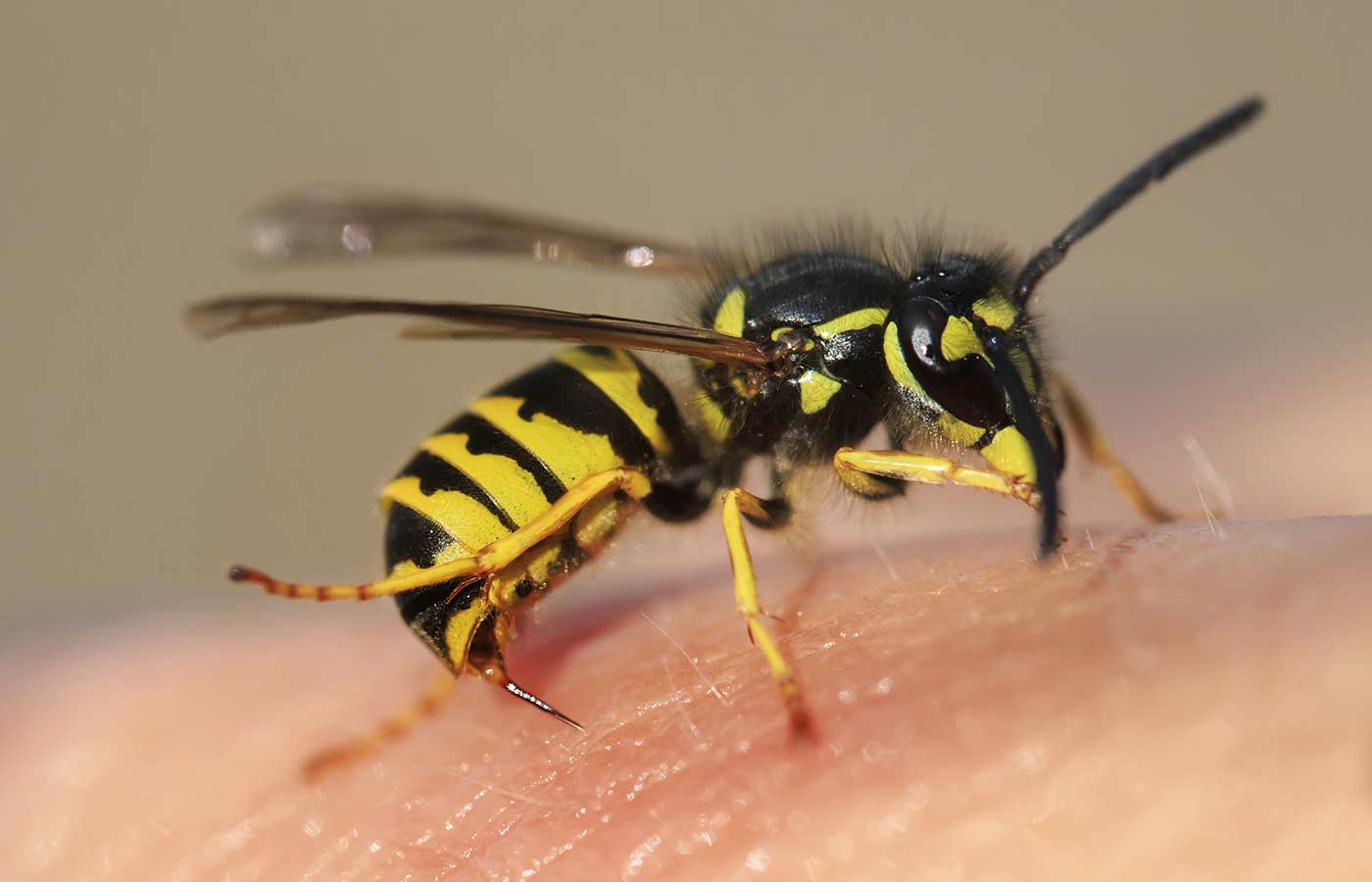Insect stings are a fact of life, especially when we’re out and about enjoying the warm weather. Most of the time, these stings are more painful than dangerous and can be treated at home with some simple remedies. However, insect stings can sometimes pack a more serious punch and cause severe allergic reactions. When that happens, you need to get medical help fast. So, let’s dive into what you should do if you get stung, and how to spot the signs that it’s time to head straight to the emergency room.
Types of Stinging Insects:
- Bees: According to Verywell Health, most bees leave behind their stingers and venom sacs. The venom contains proteins that affect skin cells and the immune system, causing pain, swelling, and itching. Some bees, like bumblebees and carpenter bees, can sting multiple times as they don’t lose their stingers.
- Yellow Jackets, Hornets, and Wasps: These insects, all members of the Vespidae family, can sting multiple times as their stingers don’t detach. Their venom often causes more intense pain and swelling than bee stings. Yellow jackets are particularly aggressive and responsible for most insect stings in the US per WebMD. Hornets, including Asian giant hornets, have longer stingers and deliver a larger venom dose, making their stings exceptionally painful. Wasps are generally less aggressive but will sting if threatened.
Immediate Steps After a Sting:
Mayo Clinic recommends the following treatment after a sting:
- Remove the Stinger (if a bee sting): If you’ve been stung by a honey or other bee and see a stinger in your skin, remove it as quickly as possible. Scrape it out with a straight-edged object like a credit card or your fingernail. Don’t use tweezers, as they may squeeze the venom sac and release more venom.
- Clean the Area: Wash the sting site with soap and water to remove any remaining venom and reduce the risk of infection.
- Apply a Cold Compress: Use ice or a cold, damp cloth for 10-20 minutes to reduce swelling and ease pain.
- Take Pain Relief Medication: Over-the-counter pain relievers like ibuprofen or acetaminophen can help manage pain and inflammation.
- Apply a Soothing Ointment: Calamine lotion or hydrocortisone cream can help relieve itching and swelling.
Home Remedies:
HealthLine recommends the following home remedies, among others, to provide relief from insect sting symptoms:
- Baking Soda Paste: Mix baking soda with a little water and apply to the sting site.
- Apple Cider Vinegar: Apply directly to the sting or soak the affected area.
- Honey: Ironically, honey can help soothe a bee sting due to its antibacterial properties.
- Plant extracts and essential oils: Extracts like aloe vera and witch hazel can help with swelling and pain.
When to Seek Medical Attention:
While most bee stings can be treated at home, some situations require professional medical care. Seek immediate medical attention if you experience any of the following:
- Signs of Anaphylaxis: This severe allergic reaction can be life-threatening. Scripps Health highlights the following symptoms of anaphylaxis:
- Difficulty breathing or shortness of breath
- Swelling of the face, mouth, or throat
- Dizziness or fainting
- Loss of consciousness
- Nausea or vomiting
- Hives beyond the sting site
- Multiple Stings: If you or – especially – your child has been stung multiple times, seek medical care immediately according to the American Academy of Dermatology Association. This is particularly important for yellow jacket, hornet, or wasp stings, as they can deliver multiple stings quickly.
- Sting Location: Stings in the mouth, throat, or eye area can be more dangerous and may require medical attention.
Preventing Insect Stings:
To reduce your risk of stings:
- Avoid wearing bright colors or floral patterns outdoors
- Don’t wear strong perfumes or scented products
- Be cautious when eating or drinking outdoors; these attract yellow jackets and wasps
- Wear shoes outside
- Keep food covered during outdoor gatherings to deter yellow jackets and wasps
- Be aware of your surroundings and avoid disturbing bee hives or nests
For those with known or suspected insect sting allergies:
Johns Hopkins Medicine recommends the following for people allergic to bees, yellow jackets, wasps or hornets:
- Always carry your epinephrine auto-injector
- Wear a medical alert bracelet or necklace with your allergy information.
- Wear long sleeved shirts and pants when outside
- Talk to your provider about immunotherapy (allergy shots) to reduce sensitivity to bee venom
Most of the time, insect stings are more painful than dangerous. But it’s still super important to know how to handle them correctly and spot when things are getting serious. With this info in mind, you can get out there and enjoy those sunny days without constantly worrying about getting stung. And remember, if you’re ever unsure about how bad a sting is, don’t hesitate to head to the emergency room and get it checked out.






Responses